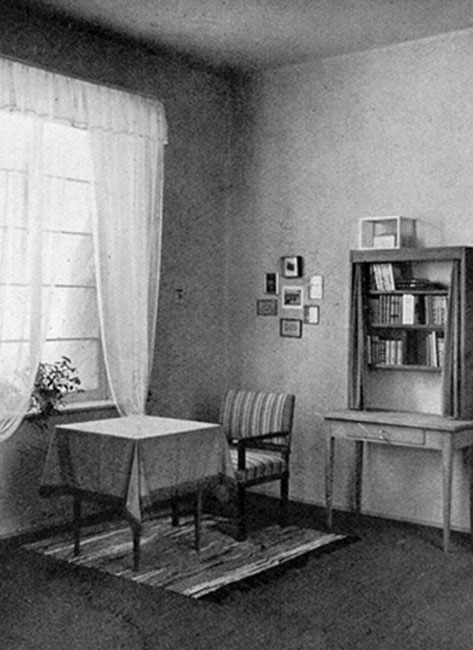Kleinbürgerliches Wohnzimmer Dresden (DE)
Heinrich Tessenow
Abstract
In 1925, the year in which Le Corbusier exhibited his Pavillon de L’Esprit Nouveau at the ‘Exposition des Arts Décoratifs’ in Paris, the ‘Jahresschau Deutscher Arbeit’ was held for the fourth time at Dresden’s downtown exhibition area, this time under the leadership of city architect Paul Wolf. Whereas previous exhibitions had themes such as ‘porcelain, ceramic & glass’ (1922); ‘game & sport’ (1923) and ‘textiles’ (1924), the 1925 exhibition was entitled ‘Wohnung und Siedlung’, due to the post-First World War housing shortage. Across an area of approximately 16,000 m2 and in several exhibition halls, about 60 interiors were decorated by various interior designers and artists. The outdoor area contained 16 model houses by Bruno Paul, Albin Müller, Gustav Lüdecke and others. A ‘scientific’ department showed the developments in housing construction, in words and pictures. Heinrich Tessenow designed the ‘Oberbayern’ restaurant as well as several sample interiors, including a large and a small bedroom, a dining room, a sitting area (Wohnzimmerecke) and a ‘petty bourgeois’ living room.
The living room was simply furnished. The position of the bookcase, table, chairs and dresser created a calm and powerful overall picture. In Kunst und Künstler (1926), Karl Scheffler described the interiors of Tessenow as follows: ‘Invisible, but thereby no less real, are the works of Tessenow, surrounded by the atmosphere of an idea, or better yet an ideal. . . . This idealism is not cast in a problematic way, but instead with a modest, classic attitude, surrounded by a sense of the romantic, in which both the soul of the tradition as well as the instinct for germination are embedded.’



